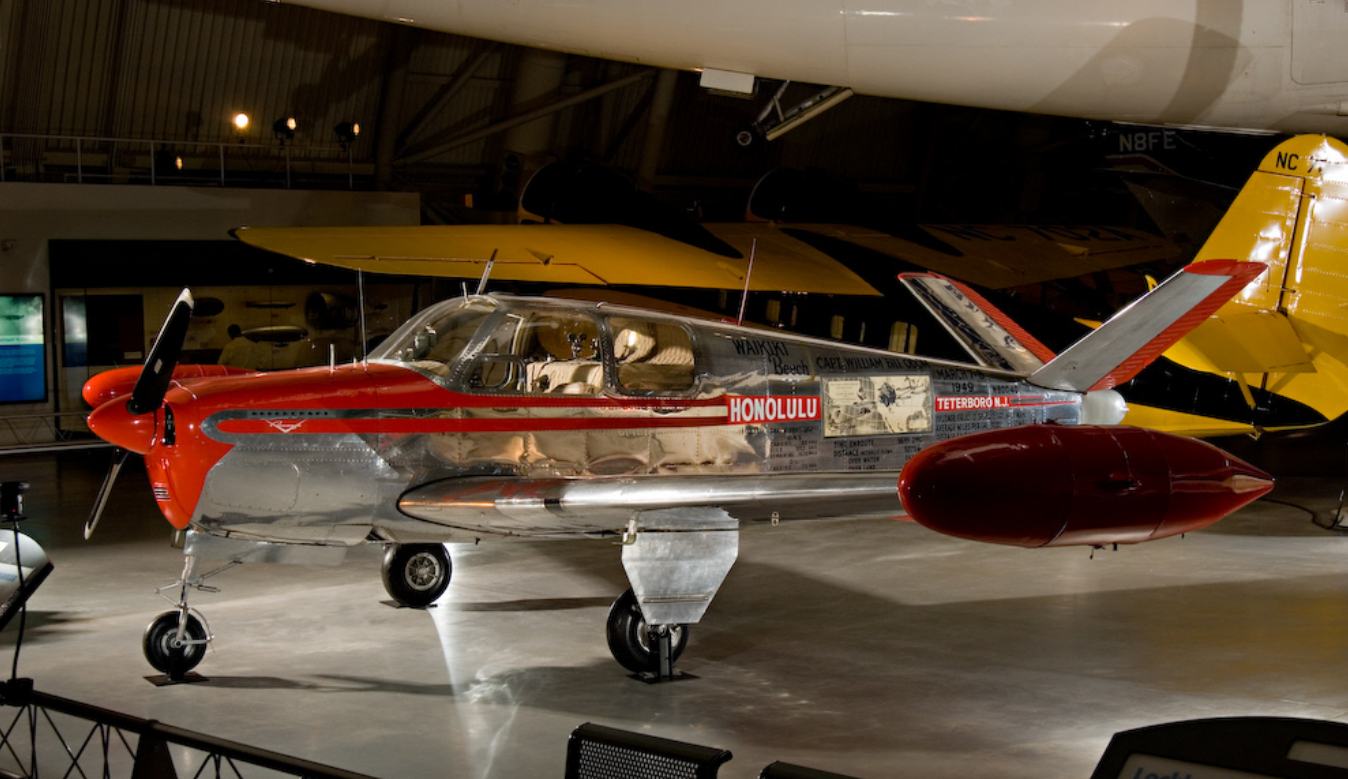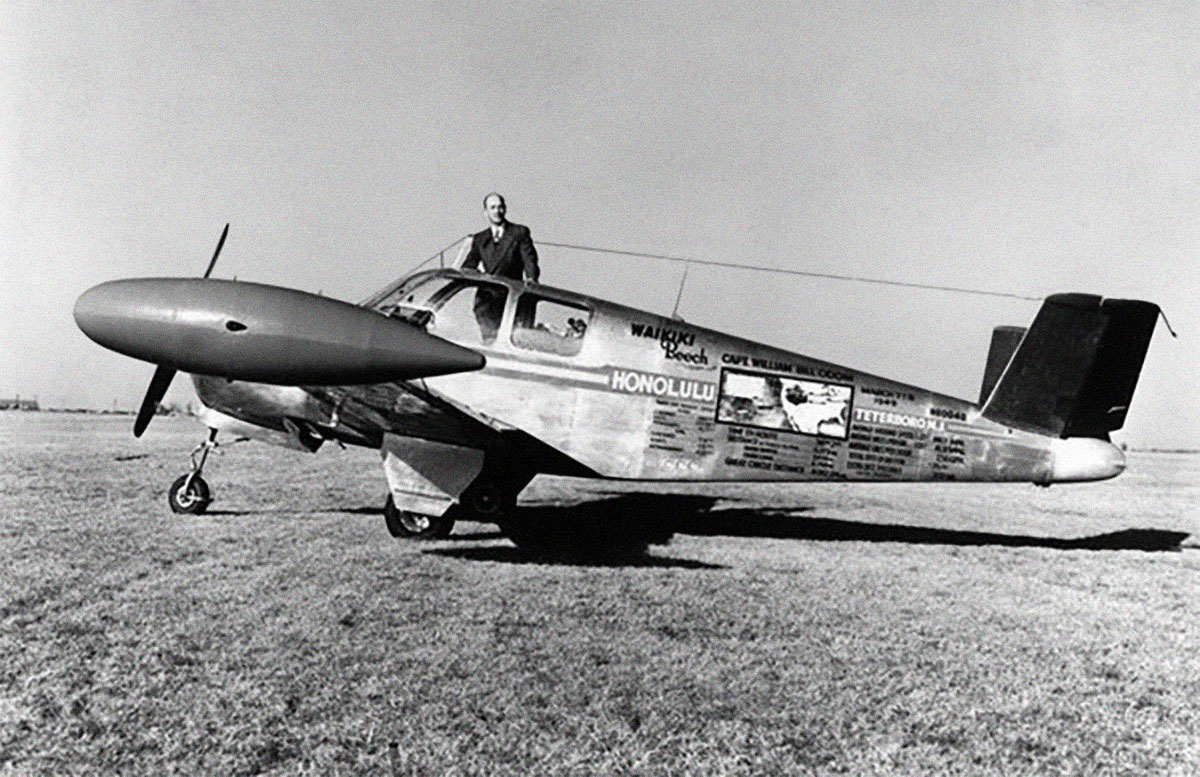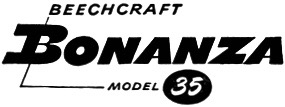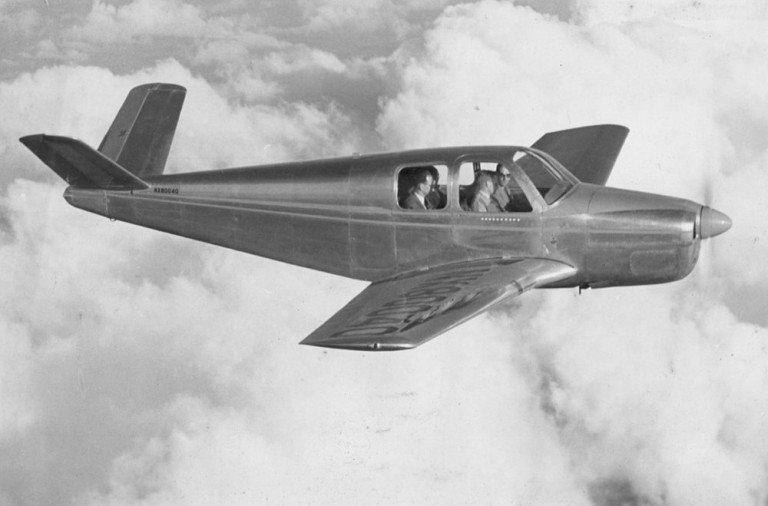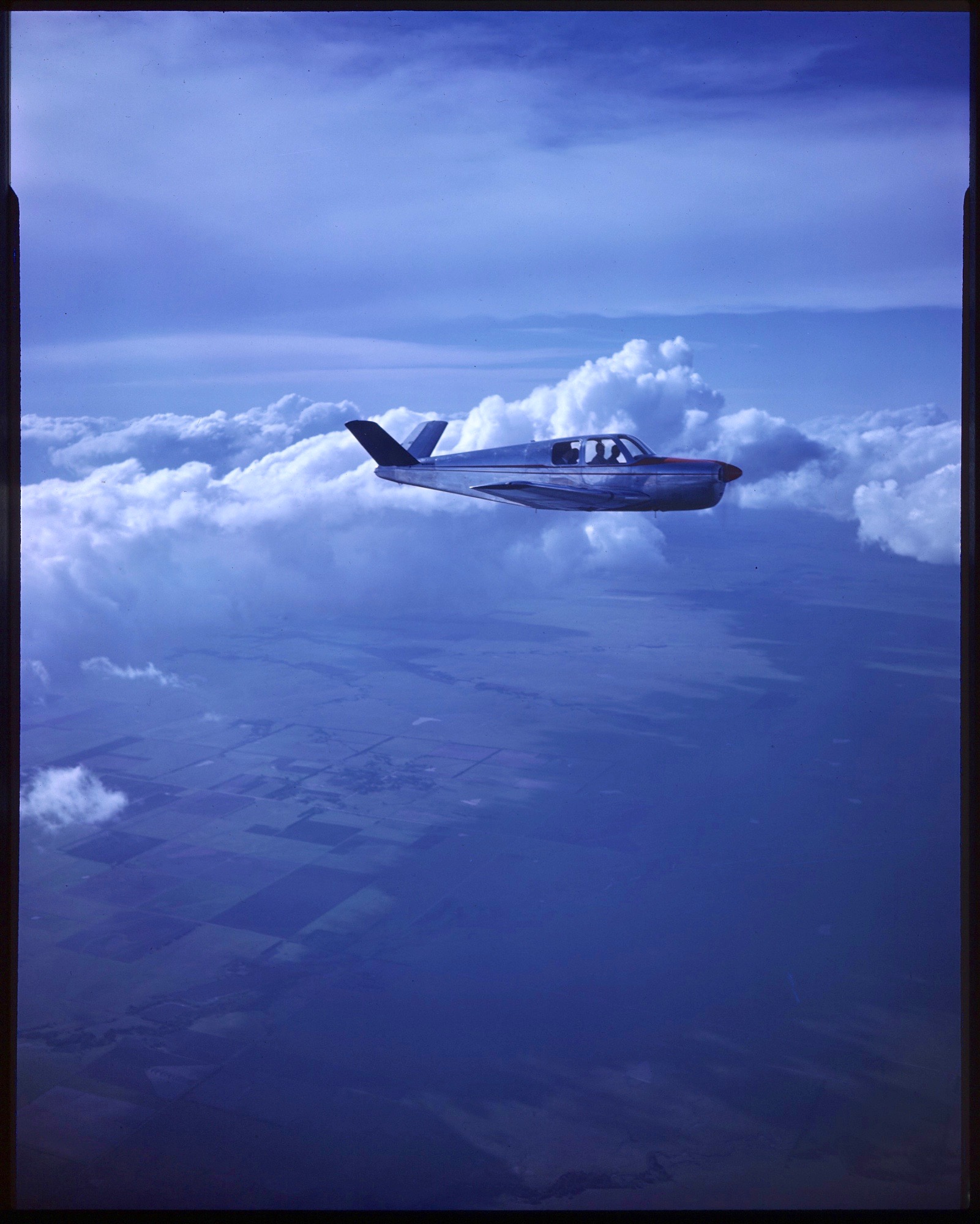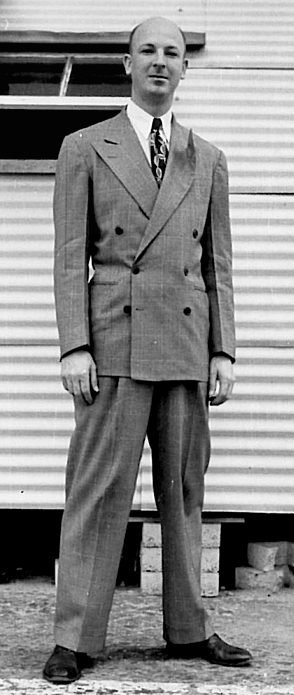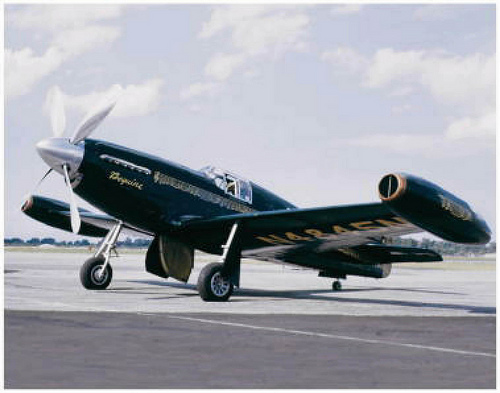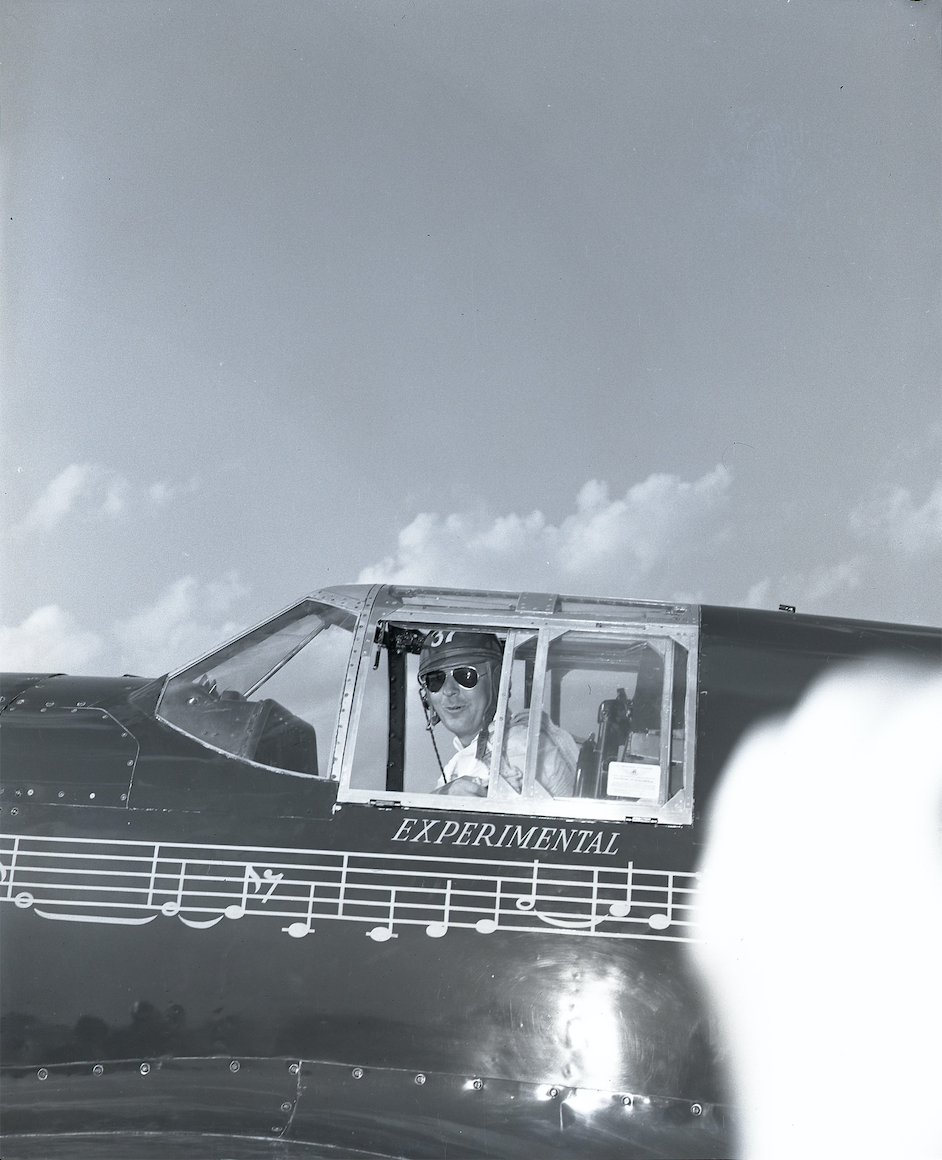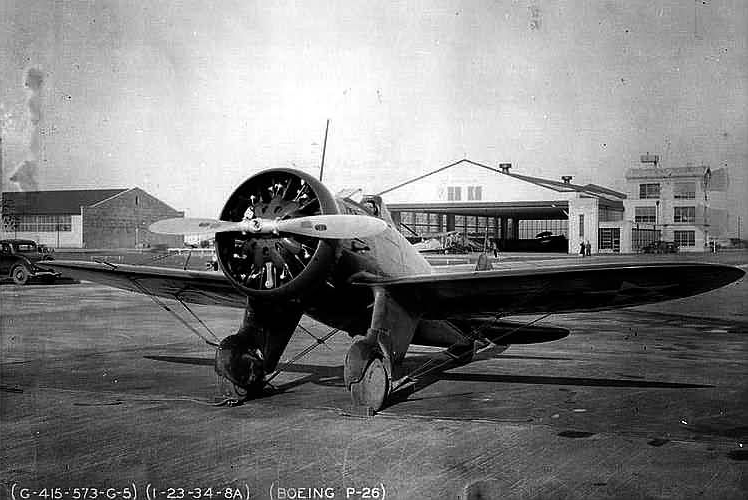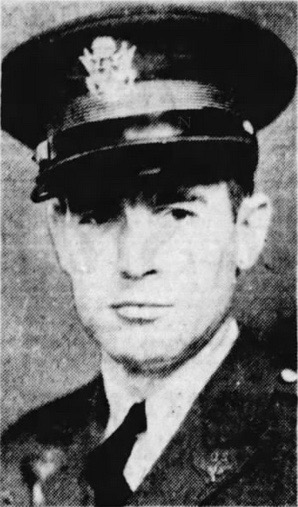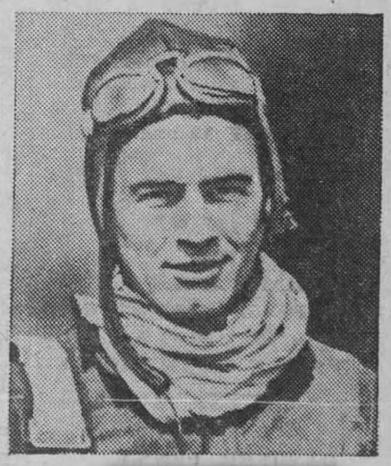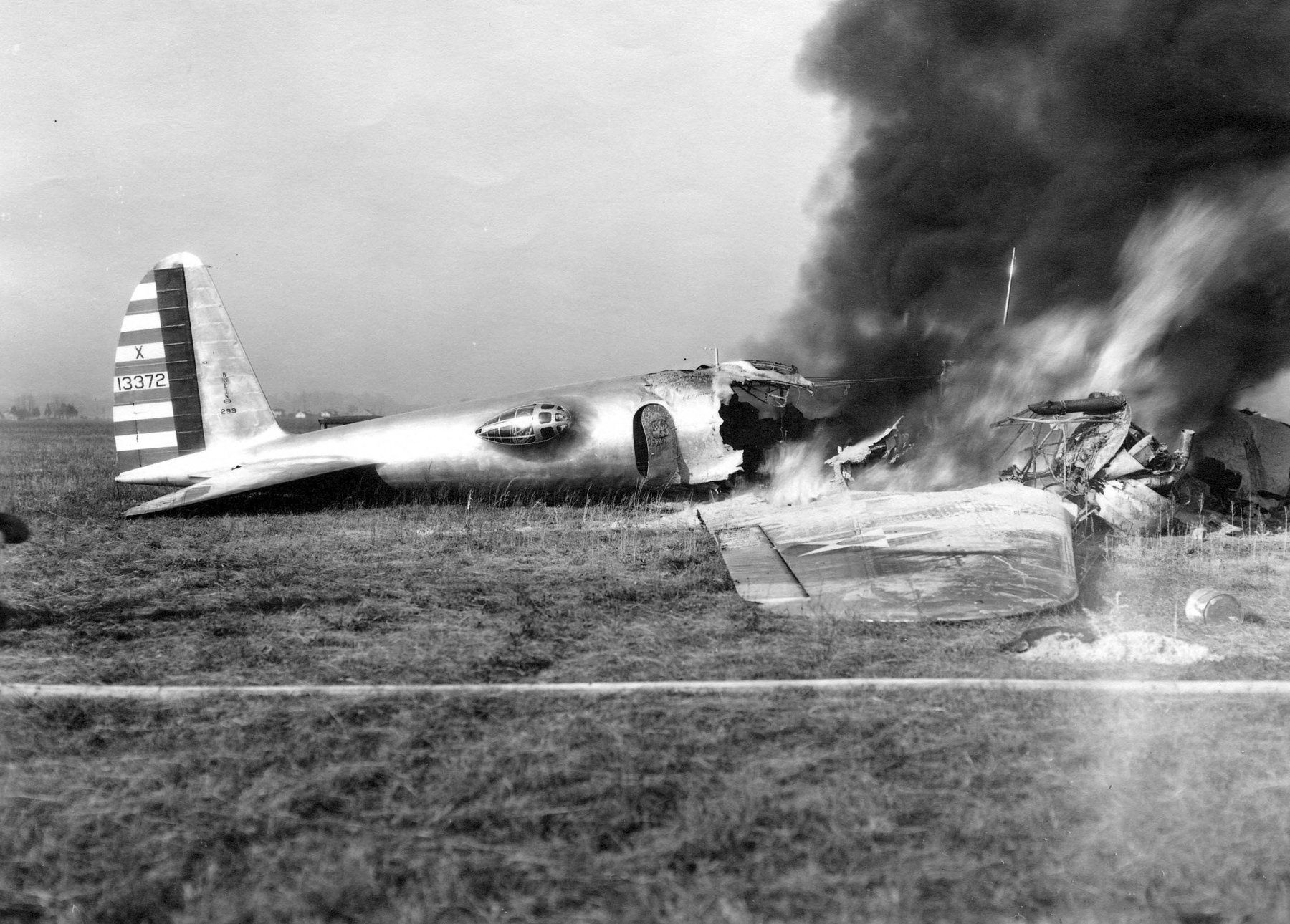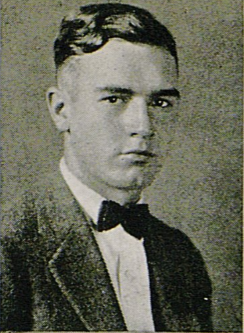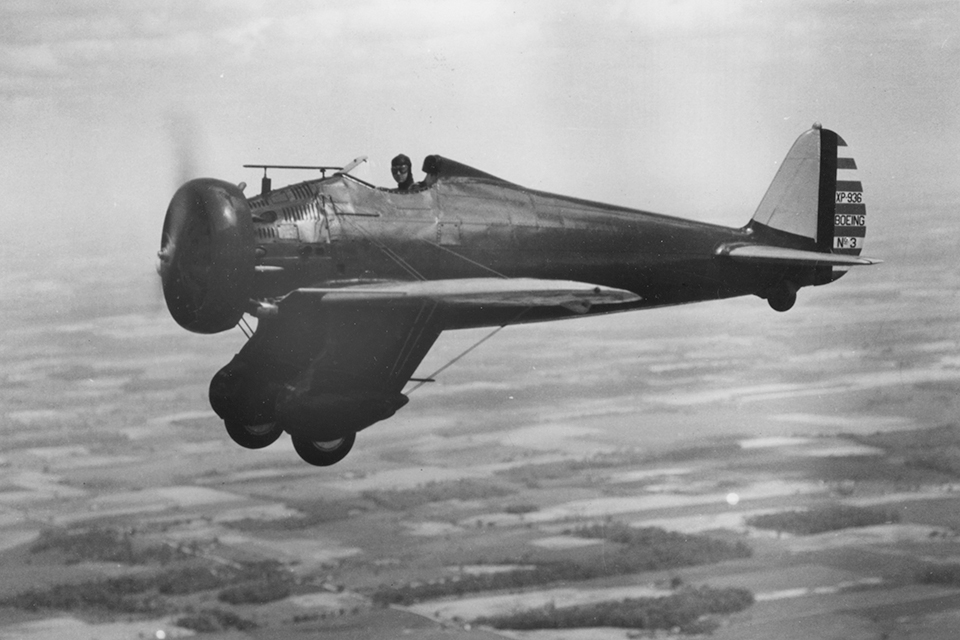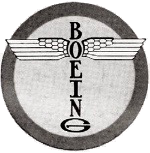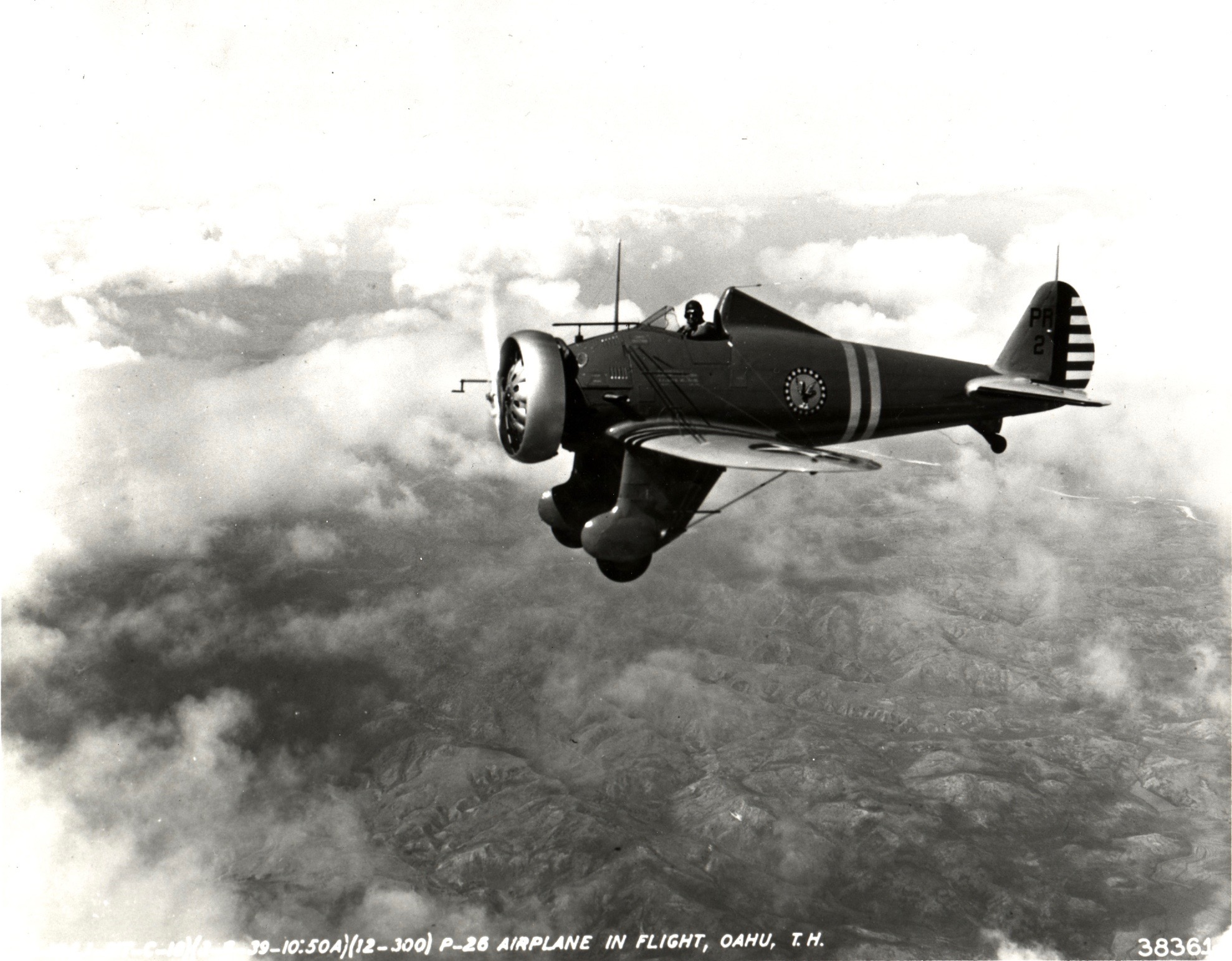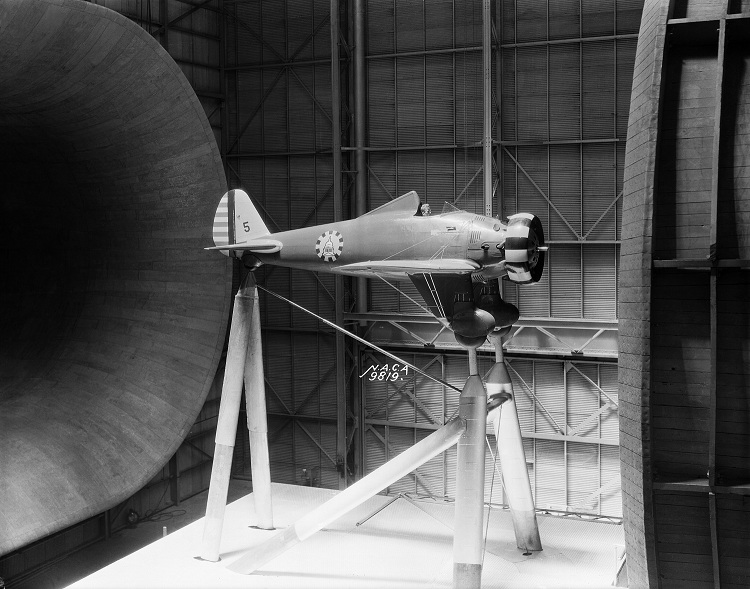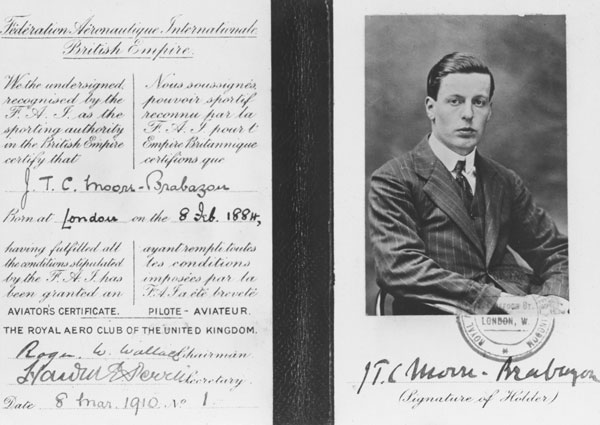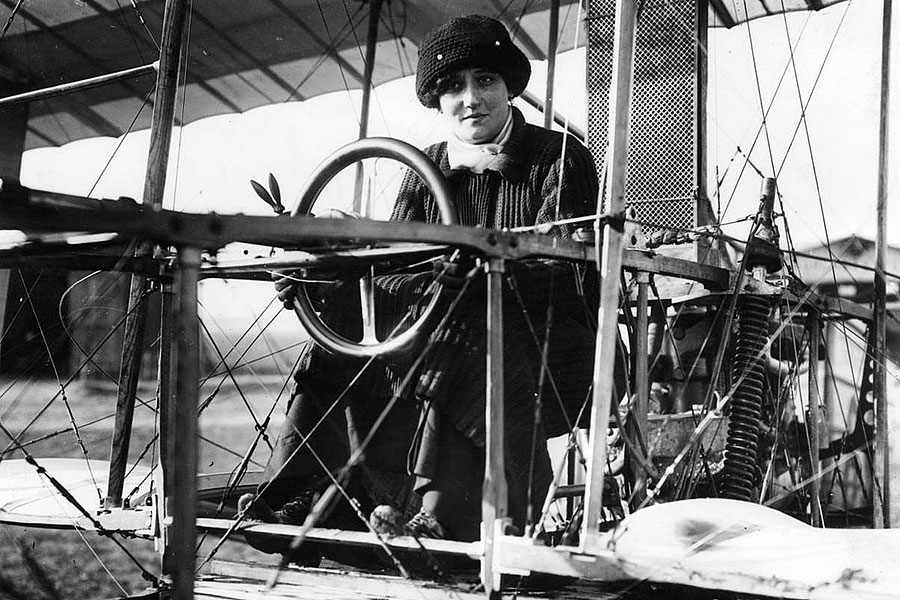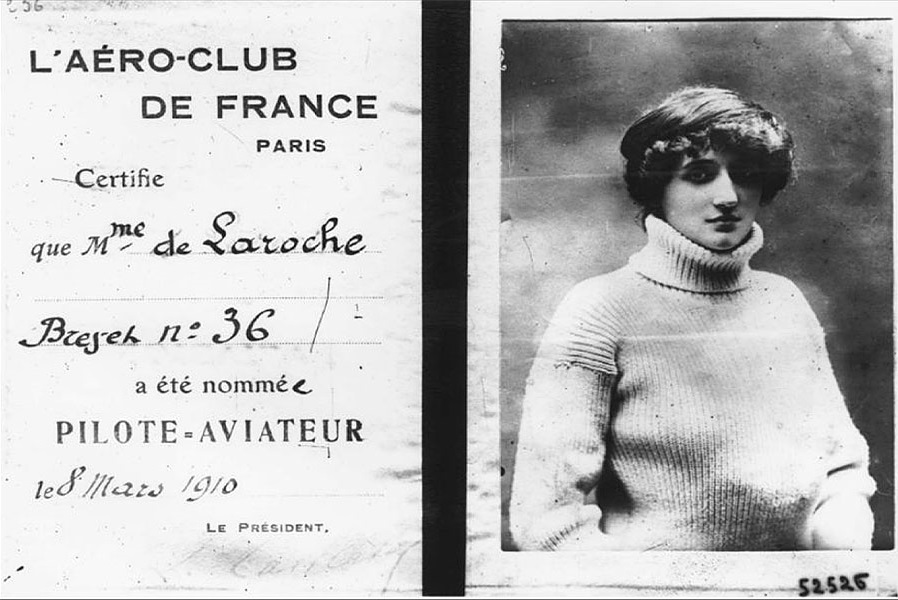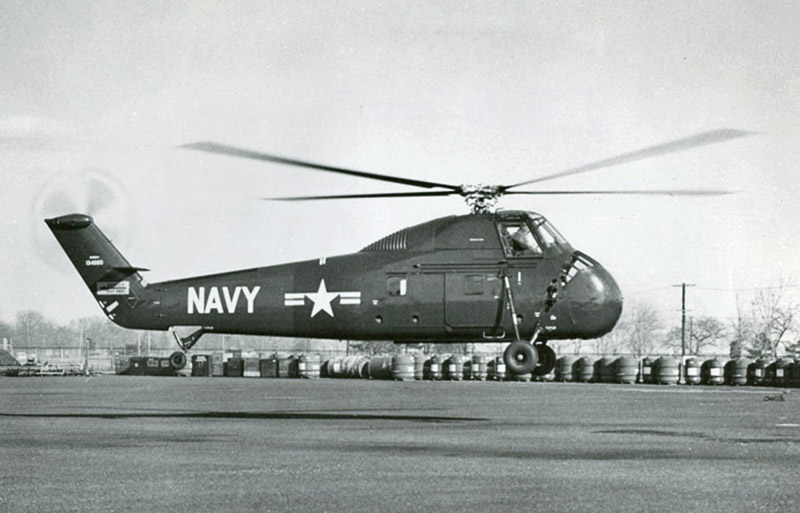
8 March 1954: A prototype for a new anti-submarine helicopter for the United States Navy, the Sikorsky XSSH-1, made its first flight at the Sikorsky factory in Bridgeport, Connecticut. The helicopter, the Model S-58, had been developed as an internal project by Sikorsky, using the company’s own money. It was a major improvement of the earlier Model S-55 (H-19 Chickasaw/HO4S).
The S-58 followed the single main rotor/tail (anti-torque) rotor configuration pioneered by Sikorsky with the Vought-Sikorsky VS-300 in 1939. The helicopter was designed to be flown by two pilots in a cockpit above the main cabin. Like the S-55, the engine was placed in the nose, installed at a 35° angle, and driving the transmission located behind the cockpit. For maintenance the engine could be accessed through two large clam shell doors in the nose. The wheeled landing gear was conventional, with two main wheels forward, and a tail wheel.
The S-58 fuselage had been designed using wind tunnel testing. The helicopter was built primarily of aluminum but the fuselage incorporated magnesium skin panels. The helicopter would be equipped with Automatic Stabilization Equipment (ASE), an autopilot system specifically for helicopters.
The S-58 has and overall length of 65.7 feet (20.03 meters) with rotors turning. The fully articulated four-blade main rotor diameter is 56.0 feet (17.07 meters), and the tail rotor, also with four blades, is 9.5 feet (2.90 meters) in diameter. The fuselage is 46.6 feet (14.20 meters) long. The helicopter has an overall height of 15.9 feet (4.85 meters). To minimize storage space on ships, the main rotor blades and the tail rotor pylon can be folded.
The four-blade main rotor allows the helicopter to reach higher speeds before encountering retreating-blade stall than the three-blade system used on previous Sikorsky models.
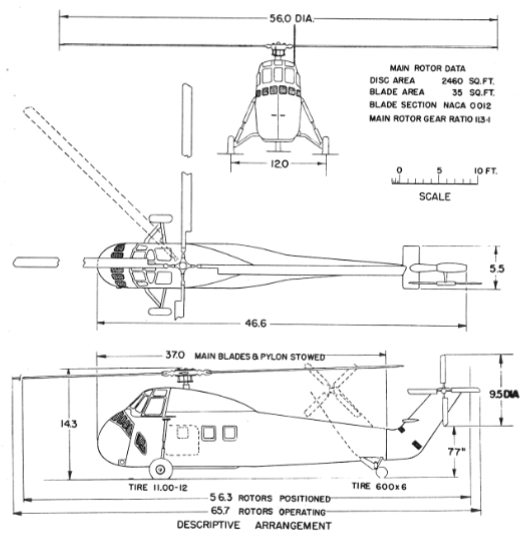
The production HSS-1 was powered by an air-cooled, supercharged, Wright R-1820-84 nine-cylinder radial engine with a compression ratio of 6.80:1. It was rated at 1,525 horsepower at 2,800 r.p.m. for takeoff; 1,425 horsepower at 2,700 r.p.m., 30-minute limit; and 1,275 horsepower at 2,500 r.p.m., continuous. The R-1820-84 was 4 feet, 4.00 inches (1.321 meters) long, 4 feet, 7.74 inches (1.416 meters) in diameter and weighed 1,405 pounds (627 kilograms). The engine required 115/145 octane aviation gasoline.
The R-1820-84 drove the transmission through a 0.5625:1 gear reduction. The transmission had a gear reduction ratio of 11.293:1. Maximum main rotor speed was 258 r.p.m. (2,914 engine r.p.m.)
The HSS-1 had an empty weight of 8,400 pounds (3,810 kilograms), and maximum takeoff weight of 13,300 pounds (6,032 kilograms). Its fuel capacity was 307 U.S. gallons (1,162 liters).
The helicopter had a cruise speed of 84 knots (97 miles per hour/156 kilometers per hour), and a maximum speed of 126 knots (145 miles per hour/233 kilometers per hour) at Sea Level. Its service ceiling was 17,600 feet (5,364 meters), and the hovering ceiling, out of ground effect, was 9,900 feet (3,018 meters) at takeoff power. The range was 227 nautical miles (261 statute miles/420 kilometers).
In an anti-submarine warfare configuration, the helicopter was equipped with a dipping sonar system and armed with two Mark 43 torpedoes. The Mark 43 was an electrically driven homing torpedo, 91.5 inches (2.324 meters) long, 10 inches in diameter (0.254 meters), weighing 265 pounds (120 kilograms). It had a 54 pound (25 kilogram) explosive warhead. In transport configuration (HUS-1 Seahorse and UH-34 Choctaw) the S-58 could carry 16 troops or 6 litters and medical attendant.
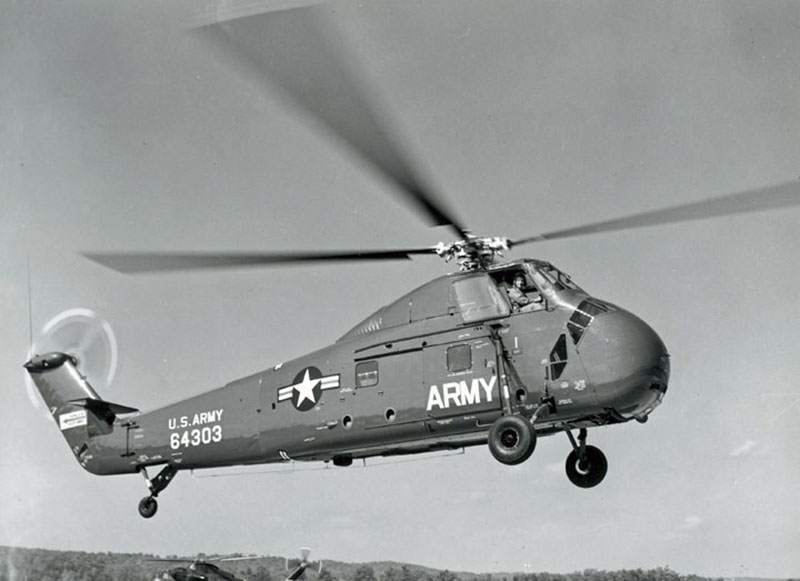
Starting at 5:29 a.m., 12 July 1956, a Sikorsky H-34 Chocktaw, the U.S. Army variant of the S-58, flown by Captains Claude E. Hargett and Ellis D. Hill, near Milford, Connecticut, set three Fédération Aéronautique Internationale (FAI) world records for speed: over a 1,000 kilometer (621.4 statute miles) circuit without payload, 213,45 kilometers per hour (132.63 miles per hour/115.3 knots);¹ 500 kilometers (310.7 statute miles) without payload, 218,89 kilometers per hour (136.01 miles per hour/118.19 knots);² and 100 kilometers (62.1 statute miles) without payload, 228,39 kilometers per hour (141.92 miles per hour/123.32 knots).³ Captain Hargett was awarded a bronze oak leak cluster in lieu of a second award of the Distinguished Flying Cross. Captain Hill was awarded the Legion of Merit.
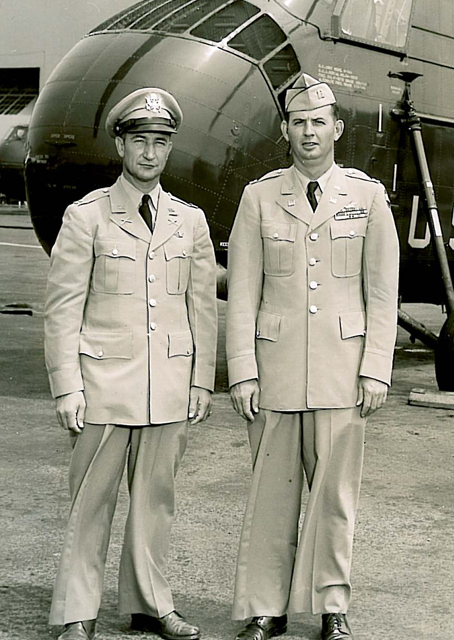
The S-58 was built in a number of military and civil variants. Sikorsky built more than 1,800 S-58 series helicopters. Another 600 were produced by licensed manufacturers.
¹ FAI Record File Number 2154
² FAI Record File Number 2155
³ FAI Record File Number 13068
© 2023, Bryan R. Swopes
